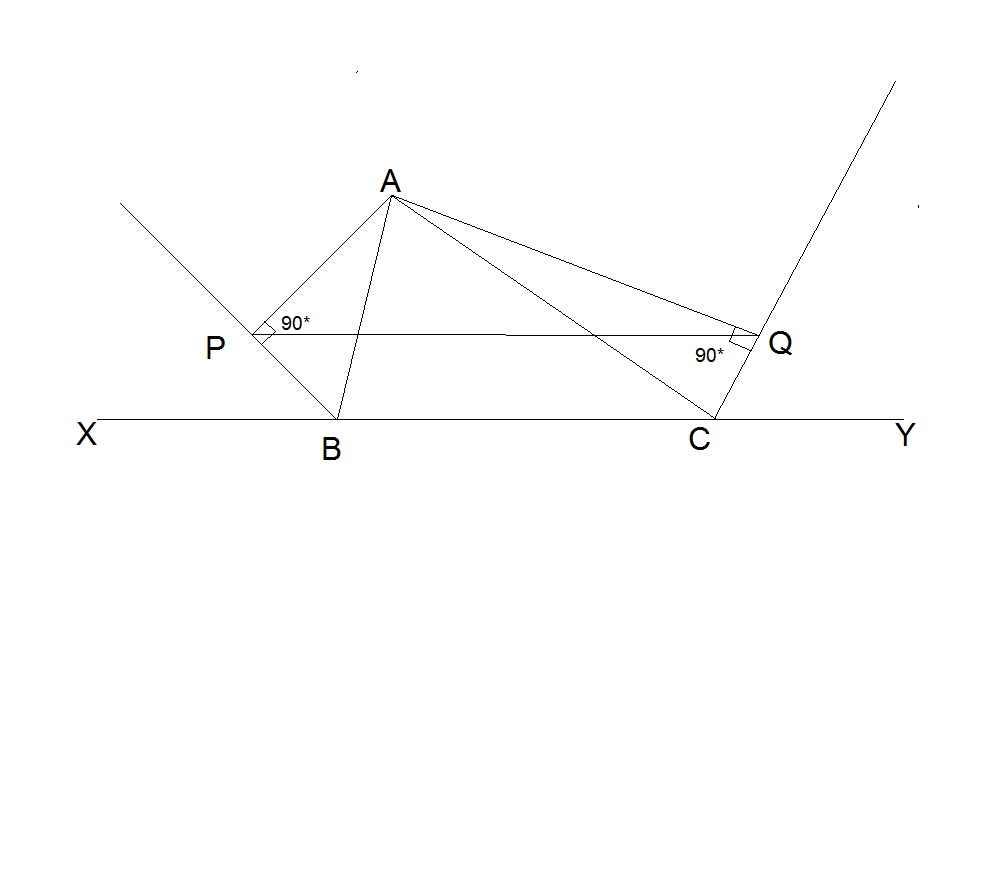Cool Geometry problem to prove

Suppose ABC is an arbitrary triangle with BC as its base. Extend BC in both ways such that XBCY straight line is created. Now bisect the two external angles ABX and ACY. From the vertex A drop two perpendicular lines on these bisectors - assume AP and AQ. Prove that PQ is parallel to BC.
No vote yet
1 vote
Easy Math Editor
This discussion board is a place to discuss our Daily Challenges and the math and science related to those challenges. Explanations are more than just a solution — they should explain the steps and thinking strategies that you used to obtain the solution. Comments should further the discussion of math and science.
When posting on Brilliant:
*italics*or_italics_**bold**or__bold__paragraph 1
paragraph 2
[example link](https://brilliant.org)> This is a quote# I indented these lines # 4 spaces, and now they show # up as a code block. print "hello world"\(...\)or\[...\]to ensure proper formatting.2 \times 32^{34}a_{i-1}\frac{2}{3}\sqrt{2}\sum_{i=1}^3\sin \theta\boxed{123}Comments
Simply extend AP and AQ (they meet the line BC at P′ and Q′ respectively) and by ASA you get equal triangles, hence AP=PP′,AQ=QQ′, then PQ is just the mid-segment of △AP′Q′, which means PQ∣∣BC.□